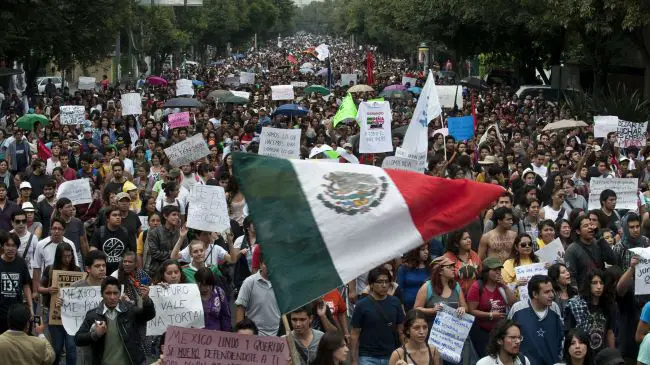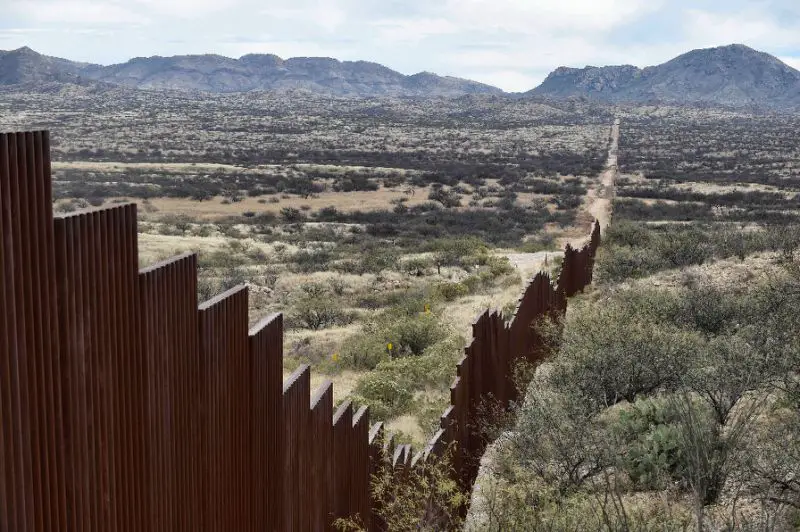Immigration has been an incredibly contentious issue over the last year, as one of Trump’s main platforms was his promise to build a wall separating America from Mexico.
According to the president, Mexican immigration, especially of the illegal variety, is amping up crime rates and taking jobs away from Americans who deserve them. Whether you buy into his nativism or not, he and his administration, as well as the public at large, seem unaware of one very critical fact about Mexican immigration.
According the the Pew Research Center, after peaking in 2007, the number of immigrants living in America has been declining, both as a result of fewer arrivals and more departures. In fact, according to a study conducted by the 2014 Mexican National Survey of Demographic Dynamics (ENADID), more than one million Mexicans and their families have actually left America and returned back to their homes since 2009.

Now, the population of illegal Mexican immigrants in America has actually dropped below the net zero level, meaning there are more illegals leaving the United States than entering.
(N.B.: Of course, there is always an element of uncertainty with these projections, as it nearly impossible to tabulate with accuracy just how many people are illegally entering and leaving the country, but the statistic includes legal and unauthorized migrants, workers of all skill levels, employed or unemployed and dependents.)
In other words, Mexicans are returning to their home country, and it’s mostly because America is becoming an increasingly complicated country to live in.
That difficulty arises in part as a result of the Great Recession, which began in 2007. Now universally acknowledged as the largest economic setback since the Great Depression, the fiscal contractions caused the United States to lose more than 7.5 million jobs, as well as double the unemployment rate. The crash of the housing market also created a loss of trillions of dollars in personal wealth.
“The Great Recession,” a brilliant book tackling the aftermath of the issue, reminds the reader that although the crisis had ended, its effects are still widely felt. One such issue stems from the country’s soft recovery from the collapse. During the Great Depression, World War II pulled the country out from its financial doldrums, providing a clean delineation between Depression and post-Depression. With the turmoil of 2007, no clear recovery occurred. As a result, a lingering fear persists in the minds of many Americans that the economy remains unstable, subject to collapse at any moment.
The Mexican financial outlook, on the other hand, appears to be improving. According to Focus Economics, there has been an estimated 2.2 percent annual increase in GDP, facilitating a 2.3 percent economic expansion in 2016. In short, working in Mexico has its appeal.
Though the two countries are certainly experiencing a diplomatic strain at the moment, the relationship between the U.S. and Mexico has always been complicated. According toMae Ngai’s “Impossible Subjects,” immigration issues between the two governments first arose when the United States established the Border Patrol in 1924. Despite exemption from a quota restriction, the U.S. instituted an increase of visa requirements for Mexicans, making the United States less accessible for immigration.
Then, during the Great Depression, that lack of accessibility intensified. It was then that the first campaigns against Mexican immigration began, which Ngai asserts represented “the beginning of the formal construction of racial discrimination against Mexicans.”
At the time, 40,000 people of Mexican descent were deported, even though half were estimated to be U.S. citizens.
Not long after, Mexico’s immigration quota was restricted to 20,000 by the Hart-Cellar Act, despite the annual influx being around 50,000 up until 1950.
With more Mexicans wishing to enter the U.S. than the quota restriction allowed, the additional visa requirements and the emerging Mexican race problems witnessed in the Southwest, legal immigration neared impossible. Ever since then, the United States’ methods for preventing immigration have been largely tied to the influx of illegal immigrants.
In “Immigration in the United States,” a report conducted by the Migration Policy Institute, the group outlines the Border Patrol’s advancements in security since its establishment in 1924. The number of agents has doubled since 2005, standing now at 21,000. In addition, the 2006 Secure Fence Act called for 651 miles of border fencing, the implementation of more surveillance technology and the placement of drones and nukes.
Okay, just kidding about the nukes, but President Trump has revealed to the American public that militarization might be an option if Mexico doesn’t agree to fund the wall. In an interview with MSNBC’s Bob Woodward, he said that “Mexico has a choice of learning things the easy way or the hard way.” President Trump then went on to reference World War II, in which “we nuked Japan, and they surrendered very shortly after.” This is the answer for “disobedience” in the eyes of President Trump.
With such a turbulent relationship between Mexico and the U.S., and a seemingly uninformed president, it is easy to see why the population of illegal immigrants in America has been dropping.
The ENADID survey mentioned earlier showed that 61 percent of repatriating immigrants specified family reunification as their main reason for returning. Only 14 percent had chosen deportation as their reason for leaving, which means that 86 percent of the one million Mexicans that immigrated back to Mexico since 2009 did so willingly.
If the majority of illegal Mexican immigrants no longer wish to remain in the United States, the question must be asked: Why is President Trump going to spend billions of dollars on a wall that will only keep immigrants, both legal and illegal, in?
As Isaac Asimov once said, “Your assumptions are your windows on the world. Scrub them off every once in a while, or the light won’t come in.”


















GOOD. Get out.
President Trump is going to build a wall it’s not a waste of time and money because not only Mexicans immigrants migrate to the US it is also Central Americans from El Salvador Honduras and Guatemala and so bring crime and drugs and murderers here to America our president is doing a good job in dealing with illegal immigrants and should continue to do just that removing illegal law breakers who shouldn’t be here in the first place look up the facts
Hey everyone get social is 061865574
Mexican ilegal immigrants don’t offer any real service. They come here. Have babies. Get on welfare. Aren’t professional workers who contribute to our nation. They are an ANCHOR not an asset. Just like other illegal immigrants who come from other countries who don’t have anything to offer us, so it’s not just Mexicans it’s ANYONE who is an ANCHOR not an ASSET to our country. GET OUT> GO HOME> We have too many AMERICANS here that need HELP!!!!!!!!!!!!!!!!!!!!!!!!!!!!!!!!!!!!!!!!!!!!!!!!!!!!!!!!!
[…] Image: https://studybreaks.com/2017/03/01/mexican-immigration/ […]